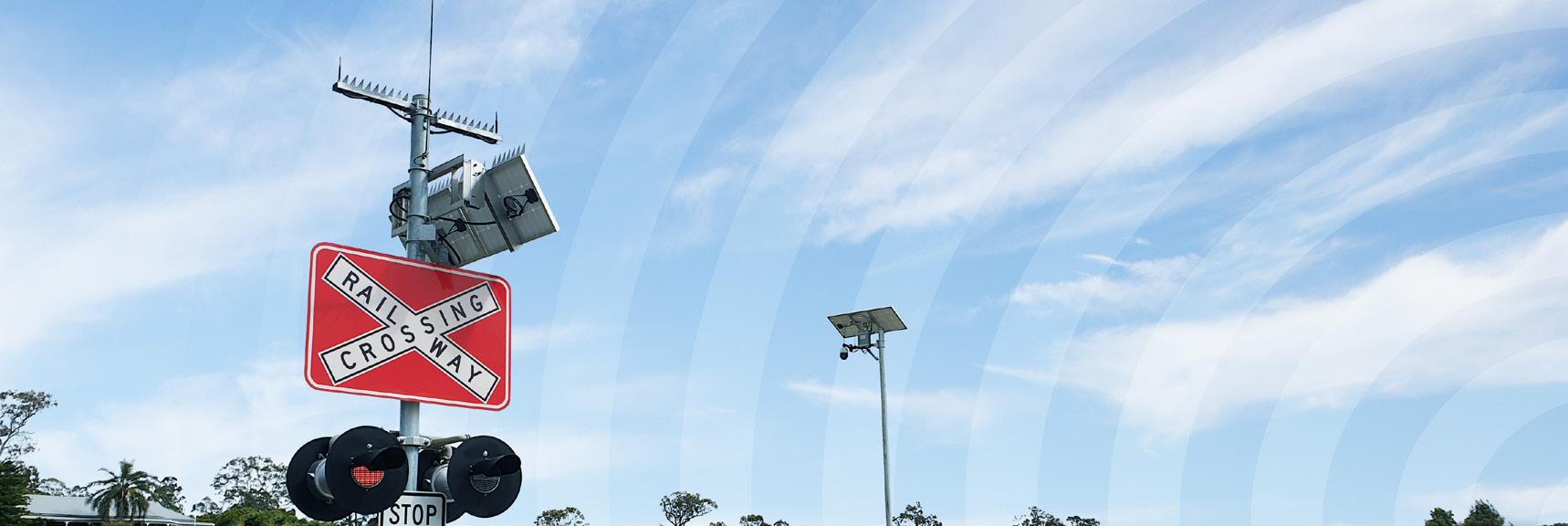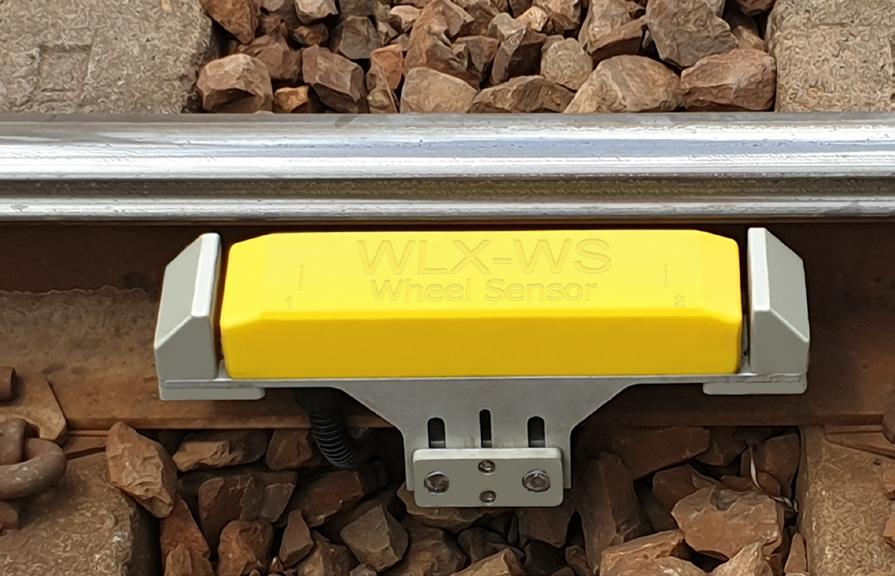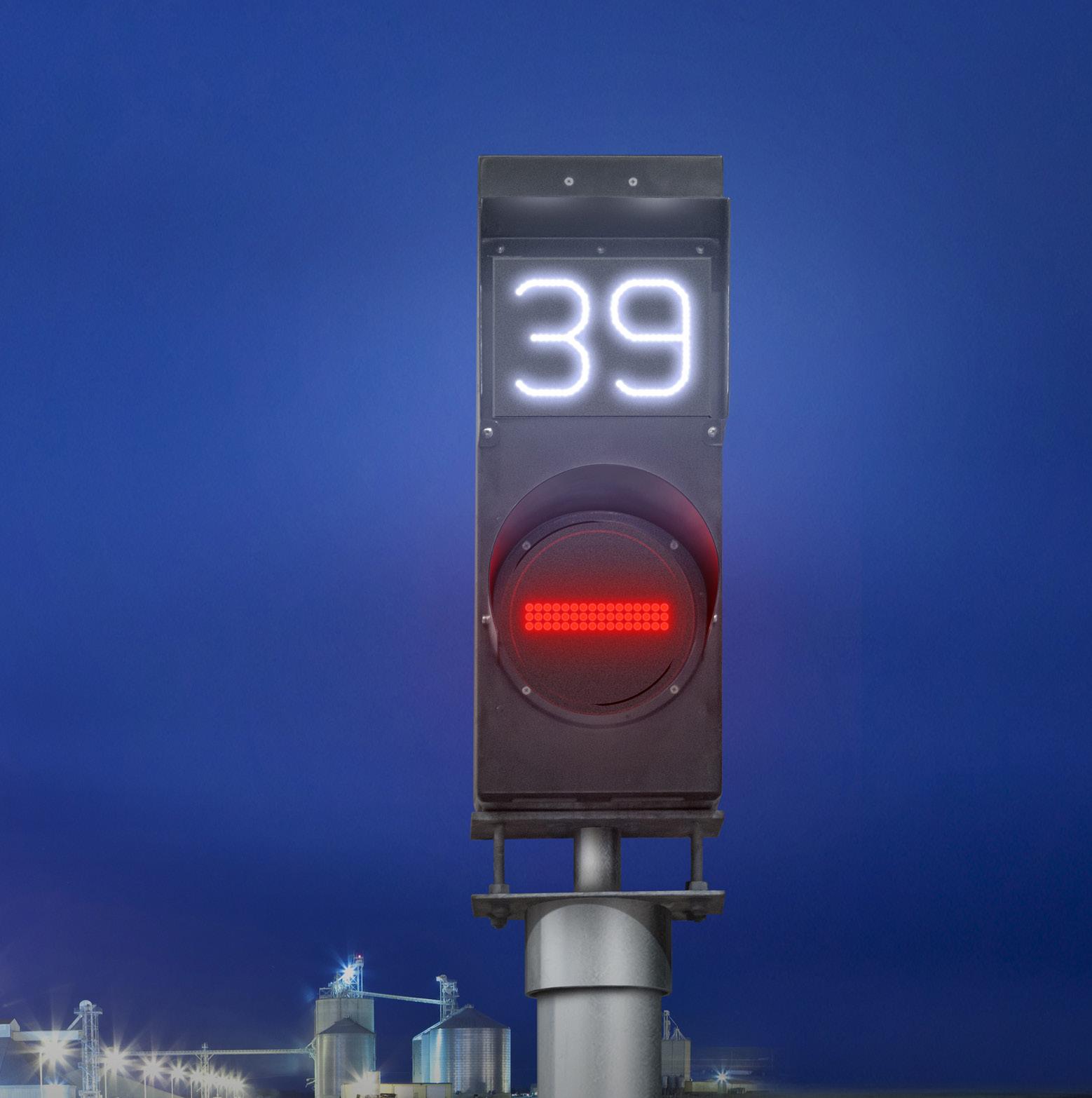










Driving
NEXT ISSUE














Following the presidential elections held in the Philippines on the 9th May, the country’s new President Ferdinand Marcos Jr has appointed officials to head up the Department of Transportation, the Philippine National Railways and the Light Rail Transit Authority.
The new Secretary at the Dept of Transportation is Jaime Bautista (pictured right). Mr Bautista previously served as president and Chief Operating Officer of Philippine Airlines from 2004 to 2012 and again from 2014 up to 2019. On taking up his new role he pledged to transform the Philippine transport system and to elevate it to global standards. He added that he hopes that he can transplant his private sector work ethic to his first government assignment and that it will be his biggest career challenge – to improve the lives of Filipinos through safe, comfortable, accessible and efficient travel.
The new Undersecretary is Cesar Chavez, who served in the same position for nine months in 2017. During that time the Department of Transport secured the approval of the National Economic and Development Authority Board for an impressive list of new rail projects, namely; the Metro Manila Subway, PNR Manila to Calamba (South Commuter line), PNR Bicol and the Tagum-Davao-Digos.
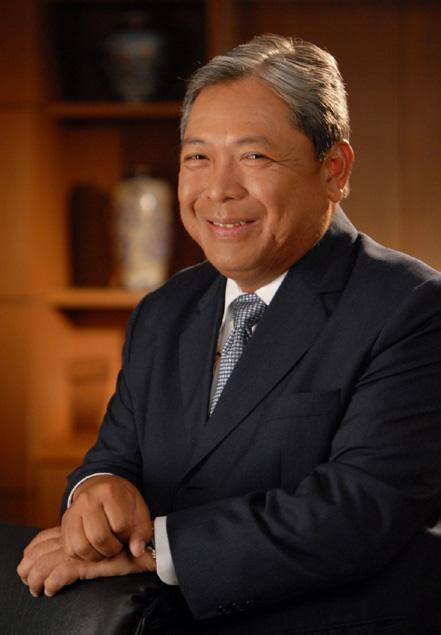
Ms Jorgette Aquino – Assistant Secretary for Railways
Mr Jeremy S Regino – General Manager, Phil National Railways
Mr Henry L Uri
Acting member of the PNR Board of Directors
Atty Hernan Cabrera – Administrator, Light Rail Transit Authority
Mr Federico Canar Jr – General Manager, MRT3
Secretary Bautista (right) led the oath taking of the new officials, including Acting Member of the Philippine National Railways (PNR) Board of Directors Henry Uri (left) and PNR Acting General Manager Jeremy Regino (centre).

Alstom, global leader in smart and sustainable mobility, has been awarded the contract by Madhya Pradesh Metro Rail Corporation Limited (MPMRCL) to deliver 156 Movia metro cars with 15 years of comprehensive maintenance for the Bhopal and Indore metro projects. This project will benefit more than 5.7 million people in both these cities. Valued at €387 million (over INR 3200 crores), the order includes installation of latest generation of Communications Based Train Control (CBTC) signalling system as well as train control and telecommunication systems; each with seven years of comprehensive maintenance.
Alstom is responsible for the design, manufacture, supply, installation, test and commissioning of 52 standard gauge Movia metro passenger trainsets of 3-car configuration each. 27 trainsets will be for Bhopal and 25 trainsets for Indore. To be built at Alstom’s state-of-the-art rolling stock manufacturing facility in Savli (Gujarat), these ultramodern, lightweight trains will operate at a top speed of 80 km/h, across the 31 km line in Bhopal with 30 stations and the 31.5 km line in Indore with 29 stations.
“We are delighted to be awarded this significant contract from MPMRCL and this collaboration will lay a strong foundation for an efficient and sustainable mass transport system for the cities of Bhopal & Indore. Following the Agra-Kanpur metro project, winning this contract is a strong validation of our commitment to deliver mobility solutions that meet the specific requirements of our customers.” said Olivier Loison, Managing Director, Alstom India cluster.
Alstom is currently also manufacturing metro trains for Mumbai Metro Line 3, and modern trainsets for India’s first semi high-speed Delhi-Meerut RRTS project.

Reaffirming its strength as a trusted global transportation supplier, Thales was recently awarded a longterm services support (LTSS) contract by SMRT Trains, with support from the Land Transport Authority of Singapore (LTA), for the continued reliability and availability of its SelTracTM Communication-Based Train Control (CBTC) signalling system on the North-South and EastWest lines.
This programme will see Thales provide ongoing repair service, spares and technical support for the existing signalling system on Singapore’s oldest train lines until 2033.
Thales will also provide both software and hardware obsolescence management and implement cybersecurity enhancements to further strengthen the cyber-resilience of the existing signalling system.
The signing of this LTSS agreement serves as a testament to Thales’ and SMRT Trains’ commitment in providing safe and reliable passenger journeys for Singapore’s rail commuters over the years.
TR Corporation strives to keep cities moving with its extensive experience of delivering safe, reliable, efficient and sustainable railway services that support growth and connect communities.
In May 2022, the company successfully achieved two significant milestones: the opening of the East Rail Line Cross-Harbour Extension in Hong Kong and the commencement of the Central Operating Section of the Elizabeth Line in London, which enhance railway network connectivity and provide efficient and quality services to passengers in both cities.

The East Rail Line is Hong Kong’s oldest railway service. Starting in the steam train era, it has been connecting Kowloon and the New Territories for more than a century while undergoing waves of modernization and service enhancements.

The extension of the line to Hong Kong Island via a new cross-harbour tunnel marked a milestone in the city’s railway development and was delivered as part of the wider Shatin to Central Link project. A new fleet of 9-car trains was procured for the East Rail Line, new signalling installed and improvements made to the existing stations along the line. Hung Hom, the former terminus station, was expanded to include additional platforms and facilities. A brand new station, Exhibition Centre Station, was built in Wan Chai North, while Admiralty Station, the new terminus, was upgraded into a mega interchange station for four railway lines with platforms on different underground levels (the East Rail Line, Tsuen Wan Line, Island Line and South Island Line).
Significant construction challenges were also overcome to deliver the city’s fourth cross-harbour railway line, including construction of the new underwater tunnel through the Immersed Tube Tunnel method and deployment of Tunnel Boring Machines to carefully thread a railway tunnel through the dense urban environment on the north shore of Hong Kong Island. In addition, bifurcation works were needed along a busy section of the existing line; there was track re-configuration, various trackside modifications and installation of new overhead lines.
After completion of all of the E+M works followed by over three months of trial operations, the new extension passed the statutory safety tests and was confirmed by the relevant government departments in early May to be safe and sound, and ready for passenger service.
With the new extension to Hong Kong Island, the East Rail Line serves a total of 16 stations along a 46-km route and offers interchange connections to five existing railway lines. The new interconnectivity creates a more comprehensive railway network for the city and promises to generate new impetus for Hong Kong’s growth and development.
Understandably, there was excitement and great anticipation as the opening day dawned on 15 May. About 2,000 railway fans and passengers lined up outside Exhibition Centre Station before 5:00am, hoping to catch the “Special Train for the First Service Day of East Rail Line Crossing Harbour”, which departed for Hung Hom Station at 5:25am. MTR representatives distributed limited edition face masks and pins as souvenirs to the passengers to share the joy of the opening of the extension.
Dr Rex Auyeung, Chairman of MTR Corporation, joined Chief Executive Officer Dr Jacob Kam and executives to welcome the passengers at Exhibition Centre Station. “I am delighted to have the community join us today in celebrating this important milestone of the East Rail Line crossing the harbour and local railway service entering a new era. It is our mission to ‘Keep Cities Moving’
and MTR will continue to make its best endeavours to provide safe, reliable and convenient railway service to passengers,” said Dr Auyeung.
The inaugural ride on the special train took only five minutes to reach Hung Hom Station but was an historic occasion to mark the milestone of the century-old East Rail Line extending across Victoria Harbour and connecting the New Territories, Kowloon and Hong Kong Island. Passengers can now travel all the way from the mainland boundary stations of Lo Wu and Lok Ma Chau to reach the commercial, convention, exhibition and financial hubs in the Wan Chai North and Admiralty areas without having to interchange.
Apart from better connectivity, passengers on the new crossharbour extension enjoy an enriched journey experience. The new Exhibition Centre Station features the classic mosaic style of MTR stations with artwork and exhibits including the station artwork “Water Memory” and “Remains of War” that exhibits the casing of a World War II bomb discovered during the construction of the station. A large skylight fills the atrium of the Admiralty Station extension with natural light, and highlights a suspended sculpture “Mapping Our Way” which represents the four railway lines converging at the station.
There are also new smart facilities on the East Rail Line. The brand-new information system “Cross-Harbour Easy” at Admiralty Station displays real time train-waiting conditions on the Tsuen Wan Line and East Rail Line platforms and train trip information for the upcoming two trains. Based on the real time information, passengers can choose time-saving routes with fewer passengers on the platform for their cross-harbour journeys. The East Rail Line now also features the popular ”Train Car Loading Indicator” on platforms and on the popular MTR Mobile app to facilitate passengers to choose more spacious train cars for boarding.
Passengers all along the East Rail Line can enjoy significant reductions in their journey time. For example, a direct trip from Sha Tin to Admiralty takes only 20 minutes with the new cross-harbour extension, compared to 31 minutes previously with two interchanges. A ride from Hung Hom to Admiralty takes just 7 minutes compared to the 19-minute train trip before.

If comfort and convenience are hallmarks of Hong Kong’s newest railway connection, the same can certainly be said of London’s Elizabeth line. Operated by MTR through its subsidiary MTR Elizabeth line (MTREL) on behalf of Transport for London, the Central Operating Section of the Elizabeth line was opened for passenger service on 24 May.
With a total route length of over 100 km and 41 stations, the east-west line dramatically increases overall passenger capacity in London’s railway network and provides a brand new travel experience. The line is served by a fleet of purpose-built Class 345 trains providing the best in passenger service with features including walk-through carriages, temperature-controlled air conditioning, real-time travel information, Wi-Fi on trains and platforms, and seamless accessibility. On the opening day of service, enthusiastic passengers flocked to the new line to experience a ride and see the spacious new “cathedral-like” stations on the central section.
Chief Executive Officer of MTR Corporation Dr Jacob Kam said, “We are excited to witness and take part in the commencement of Elizabeth line service which signifies a new era of travel in London. With our ample experience on railway operations, we are committed to delivering the highest standards of operational efficiency and reliability and the best in customer service for passengers in London. I would like to thank our MTREL colleagues for their continued hard work in the last seven years to be fully prepared for the opening of the Elizabeth line.”
Under its operating contract, MTREL started running train services in the east (Shenfield to Liverpool St Street) in 2015 under the temporary TfL Rail brand name, followed by the western sections (Heathrow to Paddington in 2018 and Reading to Paddington in 2019) in preparation for the official launch of the Elizabeth line. In addition to overseeing the daily operations of the full line, MTREL is responsible for providing passengers with the highest level of customer service and managing 28 of the stations along the route. A through train service running from the east and west into the central section is scheduled to begin on 6 November and MTREL will continue to work with Transport for London and its appointed construction and maintenance business partners to deliver the respective tasks.
As an international brand based in Hong Kong, MTR has been steadily developing its business in Mainland China, Europe and Australia. The Corporation achieves the goal of keeping cities moving with extensive experience of delivering safe, reliable, efficient and sustainable railway services that support growth and connect communities.

Track Tec Group is a leading interna�onal provider of solu�ons for railway infrastructure. In addi�on to a large por�olio of the best industry standard railway superstructure elements, we provide a wide variety of services for railway construc�on projects.

Based on many years of experience and the highest competences of our staff, we are also able to offer our Customers safe and �mely deliveries as well as professional advisory at every stage of our coopera�on.
Lumpur
exhibiting in the Official German Pavilion offers cheaper participation

The German Railway Association (VDB)
in the Official German Pavilion offers cheaper
RSA is regarded by many as the best railway show
other
Asia
is regarded by many as the best railway show in Asia &



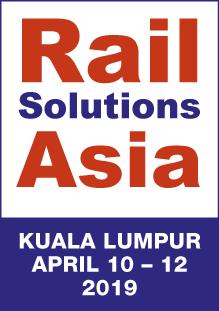
German companies.
will be
German
Annual
Annual Show.
More than 35 German companies have exhibited over the past 20 years, including some of the most loyal and consistent customers. They have this to say about the show;
More than 40 German companies have exhibited over the past 21 years, including some of the most loyal and consistent customers. They have this to say about the show:

Aldridge developed smart railway signals for the recently completed North West section of the Sydney Metro rail line. This new line features driverless trains which run from Chatswood (an inner Sydney suburb) to Cudgeong, the terminating marshalling area that’s 40km away. Aldridge is presently installing smart signals for the Sydney Metro South project, which extends the existing North West Metro a further 23km, from Chatswood to Bankstown.
Although the trains are driverless and the Metro is fully automated, the system still requires the installation of Railway Signals for the purpose of manual operations, including shunting.
The smart running signals are based on a European design which includes a white Points Position Indicator (PPI), indicating proceed Left, Straight Ahead or Right, plus a Red Horizontal Bar for Stop.
The smart shunting signals also display the Main Route Indicator (MRI) number immediately above the PPI with the upper MRI and lower PPI being totally separate & electrically isolated signals.
The above arrangement is specific to the Sydney Metro but is also available as other variants for other rail operators with an example being Yellow LEDs instead of white LEDs.
The Wireless Level Crossing (WLX) is a system that significantly reduces the installation costs for automated level crossings, as there is no need to trench and install cables from the wheel sensors, which may be located kilometres from the level crossing. The new approach from Aldridge brings additional savings with the WLX controller only requiring low power operation supplied by solar panels and 12V battery. That saves on power infrastructure compared to traditional track circuit technology, which requires mains power for operation. For sensors located in cuttings or on bends, relay towers (Repeaters) are set up between the sensor transmission tower and the railway crossing to prevent any transmission loss.
WLX provides back-to-base monitoring and real-time reporting. The system has very low through-life operating costs and uses encrypted wireless technology for all communications.
David Aldridge (pictured right) introduced both these products at Rail Solutions Asia in Kuala Lumpur in June 2022 and he is presently following up on a number of inquiries that resulted from the show.

To see a video demonstration of the running Smart Signals in action on the Sydney Metro, follow us on Instagram @railsignal. For any further information about Smart Signals or any other Aldridge products or services, visit www.railsignal.com or call David Aldridge on +61 2 9807 7777.

Trakblaze have recently installed a new Trakmate Loco Bogie Weigher, in partnership with their local distributor for Kiwi Rail in Õtãhuhu, New Zealand. The specification was to statically weigh their bogies up to 75,000kg, with a large wheel weighing surface area to accommodate different vehicles, but with minimum disruption to their site operations.
The Trakmate system was specifically designed to allow it to interface with the existing onsite rail infrastructure on site and avoid the high costs of new foundations for an off the shelf solution. The system incorporates the use of the Trakblaze Trakmate 2 loadcell design, into a custom steel structure that provides 6-wheel weighing modules to accommodate the complete Bogie portfolio geometry of Kiwi Rails locomotive fleet.
The Trakmate Bogie Weighing Software allows each wheel to be displayed on the Touchscreen PC, which is housed in a Console next to the system. There is in addition an RFID reader connected directly to the controller to allow reading of the RFID vehicle ID tags as they approach the weighing area. This provides immediate visual weight data combined with the vehicle ID, that is recorded straight to the system database for use with providing electronic or printable reports. There are also settable visual alarm limits displayed, that ensures that the loco falls within the required tolerances.
This Trakmate system features State of the Art Technology & Design and is built to our very high quality standards and improves overall safety and greatly reduces the possibility of derailments as well as rail vehicle and rail track infrastructure damage. This system ensures evenly balanced rail vehicles, which then provides smoother mobility and better fuel economy.
We also recently installed one of our MTW S8 (Mobile Train Weighing Systems) for a metro wagon manufacturing company in Rayong, Thailand.
The Mass Rapid Transit Corporation Sdn Bhd (MRT Corp) announced on the 4th of August that the open tender process for the MRT3 Project is on track and progressing well. The implementation of the MRT3 Circle Line Project will see the appointment of 5 main packages, which consist of; one Project Management Consultant (“PMC”) package, three Civil Main Contractor (“CMC”) packages and one Systems Turnkey Contractor (“STC”) package.
Chief Executive Officer, Datuk Mohd Zarif Hashim said, “MRT Corp expects the construction cost of the MRT3 Project to be competitive and comparable to the cost of the MRT Putrajaya Line Project. This open tender exercise is intended to attract the most competitive bids”.
Due to an overwhelming response, MRT Corp has extended the deadline for technical submissions for the CMC302 and CMC303 packages from 2 August 2022 to 30 September 2022. Based on this extension, the full tender submissions will now be due on 30 September 2022. The deadline for CMC301 full tender submissions remains unchanged on 30 August 2022.
Datuk Mohd Zarif Hashim, Chief Executive Officer, MRT Corp
He also added, “MRT3 is beyond a construction project, it is an opportunity to rejuvenate the economy and upskill the talent and capabilities of Keluarga Malaysia”.
“The new approach in project delivery and contracting strategy is a culmination of a decade’s worth of experience of MRT Corp as the asset owner and project developer. We believe this approach will be a growth impetus for the construction and rail industries. Local companies, particularly Bumiputera-owned, now have an opportunity to be in an ecosystem, where expertise, skills and technology can be cross-fertilized,” said Mohd Zarif.
To this end, we are pleased to announce the appointment of a local company as the PMC to assist MRT Corp in managing and delivering the MRT3 Circle Line Project.
The open tender process for the PMC saw the participation of 13 companies, through 5 consortiums. Apart from technical and commercial submissions, the bidders also had to submit a proposal for economic enhancement programs and a response to various implementation and engineering solutions. This rigorous and multi-pronged evaluation is to ensure that the PMC has the relevant experience and has demonstrated capabilities to undertake a transformational approach in delivering this major national infrastructure project.
“Besides assisting MRT Corp, we also expect the PMC to serve the needs of the civil and system work package contractors too, so that we can work together effectively to deliver the Project,” added Mohd Zarif.
“All parties’ interests must be aligned to deliver the common objectives. The responsibility to synchronise construction work activities has been tasked to the PMC. The PMC will be given targets and KPIs, with a penalty for not meeting them,” he added.
Following the open tender exercise, the award was finalised upon the approval by the MRT3 One Stop Procurement Committee (OSPC), chaired by the Minister of Finance.
MRT Corp wishes to congratulate the Joint Venture entity of HSS Integrated Sdn Bhd and HSS Engineering Sdn Bhd, on their successful appointment as the MRT3 PMC for the contract sum of RM997.9 million.

This is the critical final piece that will complete Kuala Lumpur’s urban rail network. Its proposed 51km alignment will run along the perimeter of the city of Kuala Lumpur and be connected to MRT, LRT, KTM and Monorail lines through 10 interchange stations.
Once completed, the urban rail network will further encourage public transport usage in Kuala Lumpur.
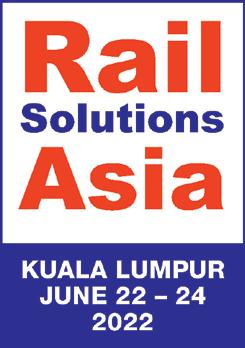
2022 was the eleventh visit to Kuala Lumpur for Rail Solutions Asia and following a two year break due to the covid virus, we were delighted to be back in Malaysia. The total exhibition space was 77% of the pre-pandemic figure, while the figure for visitors was 81%. The exhibition was again supported by the German Railway Association and as a result Germany was the most represented country with 20 exhibitors. Malaysia provided 13 exhibitors and the return of a British Pavilion saw 10 exhibitors from the UK.


67 companies from 13 countries displayed products, ranging from Rail Fastening Systems and Under Floor Products, to Fire Proofed Railway Interiors and Train Weighing Systems. Exhibitor comments included:
• I was impressed with the number and diversity of organisations represented.
BCRRE
• After 2 years of COVID we had more visitors than expected. Positive talks. RSA well organized as usual. Voestalpine
• RSA helps us to continually grow our presence in the South East Asian Rail Market Delkor

• Good show with all the right people attending Trakblaze
• Congratulations on a magnificent exhibition. It was our first participation and certainly not the last! Cenzin
• RSA consistently provides us with a platform to connect with our clients. Great show, with a great crowd Global View

Senior representatives from the local Malaysian railway operators attended the opening ceremony. Prior to the Opening Ceremony the VIPs met with some of our key supporters (see pictures right and below)

(Pictured with show organisers Charmaine Louis & Norman Johnston)
Tonny Yeap
Director MyHSR Corp














 Cenzin & Koltech Austrian Pavilion
Linsinger
Voestalpine Railway Systems Getzner
Vossloh
CRRC Delkor
Penang State Government
Head of the Vietnam Railways delegation –Le Khang in conversation with Rail Systems Engineering.
Hendrik Holz from Funkwerk is visited by delegates from ERL – KLIA Ekspres.
Ashkan Motaman demonstrates Trapeze’s products to Crestory Janeo from Manila LRMC.
Hannes Saurug from Voestalpine Railway Systems fields a question from a group of Rapid Rail visitors.
Staff from Malaysian mainline operator KTMB on the Linsinger stand with Hans Peter Bartmann.
Exhibitor and Signalling Workshop Chairman, Joachim Janle of Thales with a delegate from LRT Jakarta.
During their subsequent tour of the exhibition the VIPs, visited many of the stands and showed a keen interest in the exhibits including:
Senior Managers from other Asian rail operators and authorities visited the exhibition stands, including:
Cenzin & Koltech Austrian Pavilion
Linsinger
Voestalpine Railway Systems Getzner
Vossloh
CRRC Delkor
Penang State Government
Head of the Vietnam Railways delegation –Le Khang in conversation with Rail Systems Engineering.
Hendrik Holz from Funkwerk is visited by delegates from ERL – KLIA Ekspres.
Ashkan Motaman demonstrates Trapeze’s products to Crestory Janeo from Manila LRMC.
Hannes Saurug from Voestalpine Railway Systems fields a question from a group of Rapid Rail visitors.
Staff from Malaysian mainline operator KTMB on the Linsinger stand with Hans Peter Bartmann.
Exhibitor and Signalling Workshop Chairman, Joachim Janle of Thales with a delegate from LRT Jakarta.
During their subsequent tour of the exhibition the VIPs, visited many of the stands and showed a keen interest in the exhibits including:
Senior Managers from other Asian rail operators and authorities visited the exhibition stands, including:
More than 140 delegates attended the conference sessions and specialist workshops, which included topics ranging from “Life-Cycle Optimisation” to “Network Communications Solutions”. The conference again included Open Forum discussions, where AROA members raised topics for discussion by all of the delegates.
More than 140 delegates including 85 members of the Asian Railway Operators Assoc. (AROA) attended the conference.





The AROA Open Forum is a popular section of the Workshops, as operators and suppliers debate issues and challenges in their jobs.

Marcelo Blumenfeld chaired our first ever workshop on Education & Training, with papers from UniKL & Asian Rail Academy.
The two rail operators continued their discussion in the coffee session, which followed the workshop.



With conference coffee and lunch breaks held in the exhibition hall, delegates, exhibitors and general trade visitors have ample opportunities to network and relax in both formal and informal environments. Informal Drinks Receptions held at the end of both conference days in the exhibition hall are popular with all of the participants.



AROA is a group of Asian urban and mainline railway operators and is designed to:
■ provide a forum for the exchange of ideas and information
■ promote awareness of new technologies
■ highlight, address and respond to the challenges facing rail-bound transportation in Asia.
The AROA Annual Congress is the highlight of the AROA year. Senior Managers from railway operators across Asia converged on Kuala Lumpur for three days of unrivalled opportunity to develop their knowledge and understanding of the railway industry.
The emphasis of the association is very much on the sharing of expertise and experience for the mutual benefit of all members.
With conference papers and specialist workshops, plus many of the world’s top railway suppliers on show, this is an event not to be missed by any railway operator, who wishes to develop their staff’s knowledge and improve their service to the travelling public.
Delegations, which attended this year’s Congress included the following:
Comments from AROA members included:
It is a perfect forum where the operators exchange good practices and expertise, as well as the avenue where operators meet suppliers and learn more about the products being exhibited. Le Khang, Deputy Director, Vietnam Railways
It was interesting sharing maintenance strategies with not just other rail operators in the market, but also research experts who have vast knowledge of global trends in maintenance. Odinze I. Akponor, Rolling Stock Manager, Manila LRMC
RSA has provided a platform for railway operators to gather & exchange knowledge & good industry practices, which I value a lot. I have made great friends at the event. Woon Khai Jhin, Assistant Manager, SBS Transit


Profesionally made, and neatly organized. The event widened our view of railway operating problems that we, ASEAN countries, mutually share and try to overcome. Adiprabowo Wicaksono, Project Engineer for Viaduct, LRT Jakarta


We had a chance to compare our best practices with other Asian rail operators and learn from their experiences. Keep up the good work in organizing the best Railway Conference in Asia. Alexander A. Maglonzo, Training Consultant, Manila MMS

Membership includes access to all aspects of the Annual Congress including air flights and accommodation
For full details of Membership Benefits, Annual Fees and an Application Form, please contact: info@tdhrail.com
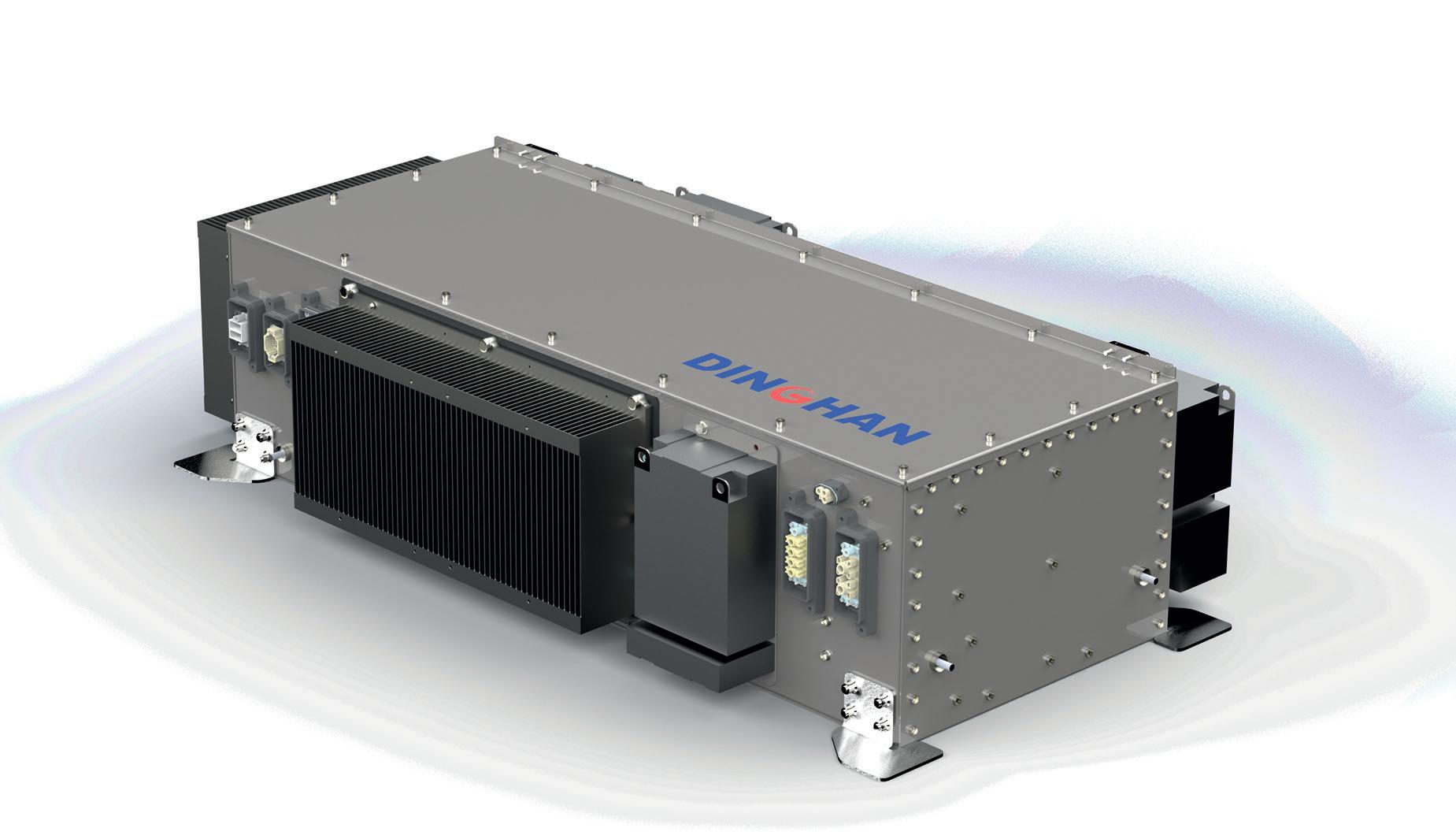
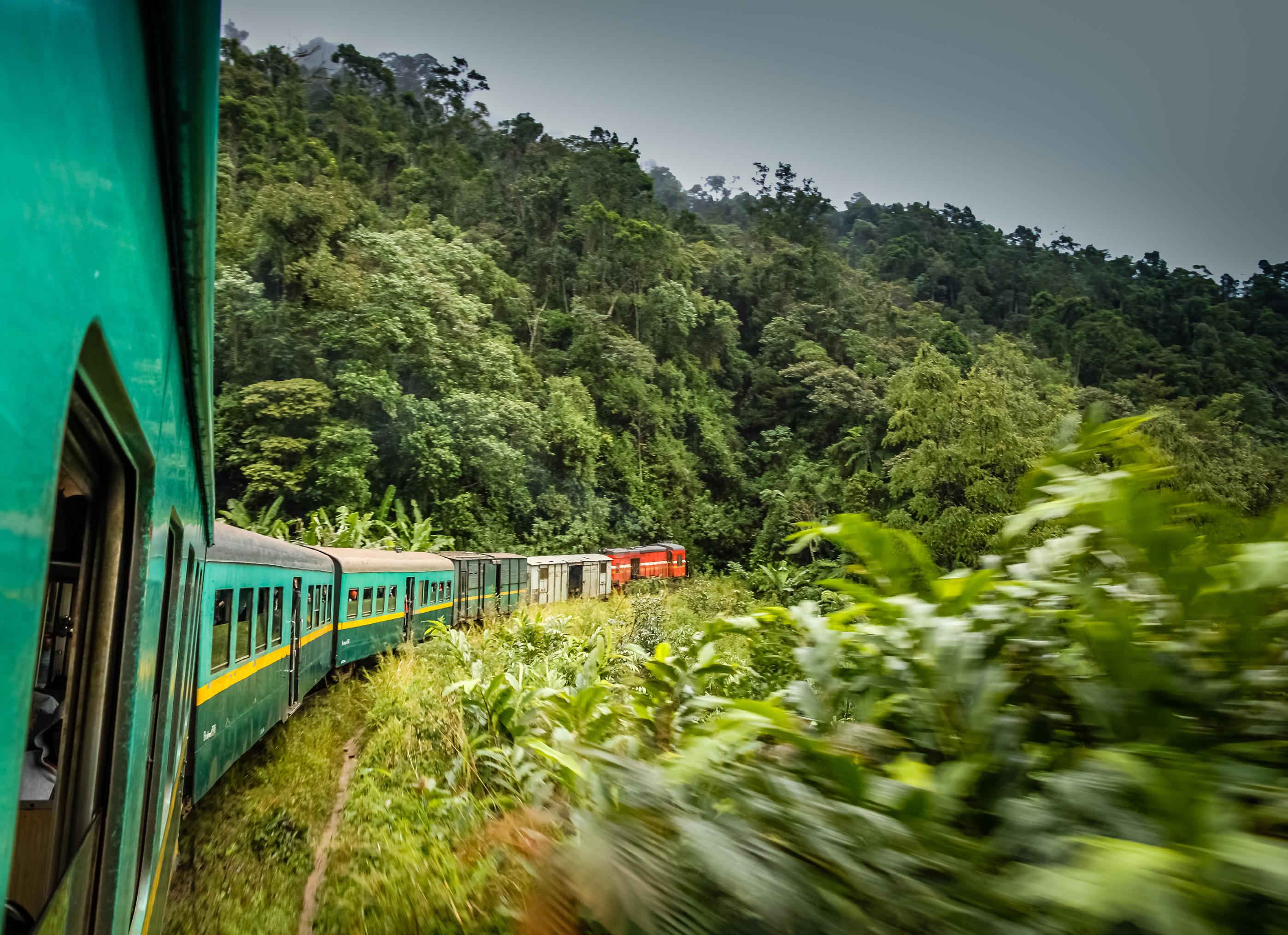

 By Liam Turbet Technical Manager, Delkor Rail Pty Ltd
By Liam Turbet Technical Manager, Delkor Rail Pty Ltd
Resilient rail fastening systems have been in common use around the world for many years now, with the first bonded systems becoming available in the 1970s.
Prior to bonded rail fastening systems becoming available, the typical method for increasing the resilience of rail fastening systems was to introduce an elastomeric pad, either between the baseplate and supporting structure, or between the rail foot and the rail seat of the fastening system. While these types of systems provide some vertical resilience and decrease in vertical track stiffness, the lateral resilience and load distributing characteristics of these systems remained essentially unchanged. Lateral wheel loads in these systems are typically either transferred directly to the anchor bolts of the system, in the case of an elastomeric pad beneath a baseplate, or result in very high rail clip deflections and stresses in the case of an elastomeric rail seat pad. This approach has its merits for use in ballasted track, where lateral resilience is provided by the ballast/sleeper interaction, but in concrete slab track construction, bridge transom structures, or elevated viaduct structures, the lack of lateral resilience results in increased component stresses and in some cases premature failure.
To understand why lateral resilience matters in non-ballasted track systems, it is essential to understand the relationship between the rail moment of inertia and the fastening system stiffness in both vertical and lateral senses.
The rail moment of inertia is a key parameter that determines how much the rail will bend. A very high moment of inertia results in less bending, where the highest load along the rail is located. Less bending, i.e. higher stiffness rails, apply pressure more evenly to the rail seats supporting them over a longer length. This fact has been the reason for rails increasing in weight over time as rolling stock has become heavier and faster, leading to higher axle loads and productivity. This key parameter is dictated by the shape of the rail, with a taller rail having a higher vertical stiffness. The lateral stiffness or moment of inertia of the rail is also dictated by its shape, however in nearly all cases the lateral stiffness of a rail is significantly less than its vertical stiffness. As an example, the difference between lateral and vertical moment of inertia is
approximately 6 fold! Consequently, lateral wheel loads tend to be more concentrated at rail seats and fastening systems, as the rail has less resistance to bending laterally than vertically.
This is where the stiffness of the fastening system becomes important. The vertical stiffness of the fastening system helps to distribute the vertical component of the wheel load across a larger number of rail seats. The lower the stiffness of the fastening system, the further the load is distributed thanks to the rails ability to resist vertical bending. However, in traditional, non-bonded fastening systems there is typically a very high lateral stiffness. This very high stiffness lateral support coupled with the lower resistance to lateral bending in the rail amplifies the load and stress that these fastening systems experience from the lateral component of the wheel load. This effect becomes more pronounced in curves where the lateral wheel load increases relative to the vertical wheel load. Visual signs of these load concentrations include cracking of concrete around fastening system anchors, frequently breaking rail clips, failed anchor bolts, increased abrasive wear on rail seat components and increased rates of rolling contact fatigue.
Bonded fastening systems such as the Delkor Egg and ALT-1 are comprised of a top plate, that is fastened to the rail foot and a base frame or plate that is anchored to the supporting structure. These two pieces are then bonded together to form a single piece using a natural rubber compound through a vulcanisation process. It is this bonded natural rubber compound that becomes the resilient element of the fastening system. The resilient element surrounds the top plate and provides a lower stiffness, not only vertically, but also laterally. The decreased lateral stiffness allows for a small amount of lateral deflection at the rail seat, which can significantly reduce the lateral loading that each fastening system experiences. Since the top plate, clipped to the rail, can move relative to the bottom frame in all directions there are significantly reduced stresses in rail clips. In these systems the rail is not required to move in the rail seat as with a resilient rail seat pad. This in turn also leads to reduced abrasive wear in rail seat components. Bonded fastening systems have fewer individual
parts that move against each other, meaning less abrasive wear. As a result these systems can achieve long service lives with little to no maintenance requirement.
Modelling of the effective wheel load (QRW), the load that each fastening system experiences, and deflection for a given rail section and rolling stock both laterally and vertically shows the benefits of introducing lower lateral stiffness in non-ballasted track systems. The graph above shows this modelling for a curve and it can be seen that by selecting fastening systems with lower lateral stiffness i.e. 10-20kN/mm compared with 150kN/mm can lead to a reduction in lateral effective wheel load of 40-50%. In practice this results in lower stress for components within the system and in the supporting structure.

These reinforcing benefits are not exclusive to greenfield projects. Bonded fastening systems such as the ALT-1 can be designed and manufactured as drop-in replacements for existing systems that use resilient rail seat pads or base pads.
A particular section of Toronto’s Transit system has a curved section of track that required quite frequent maintenance. The rail clips in this curve were failing at very high rates, so high in fact that rail clips were stored on site, in the tunnel, so that maintenance crews would have them at hand for replacement without needing to bring them in. Additionally anchor studs would often fail and need to be cored out and replaced. The fastening system used in this area included a resilient rail seat pad, which, due to the high lateral wheel loads in this curve, was causing large deflections in the rail clips as the rail moved within the rail seat resulting in early clip failures. Delkor Rail was able to develop an ALT-1 design that matched the existing anchoring system pattern, rail seat height and inclination so that it could be installed without modifying the track alignment or performing any major structural work. The ALT-1 introduced lateral resilience to this area of the track with very significant benefits. Since the installation was carried out, there have been no reports of clip failures, resulting in a significant reduction in maintenance hours.
In rail systems where components are breaking, there is usually a push to make components out of stronger materials, with larger

diameters in an effort to resist the, at times, immense loads imparted by the passage of rolling stock. It seems counter intuitive that the answer may often be the opposite. Allowing the rail track a small degree of movement using resilient fastening systems can unlock huge benefits for the system as a whole. The increased
distribution of loading is just one benefit of bonded resilient fastening systems. Reduction in ground borne vibration as a result of the lower natural frequency of these systems has usually been the driving factor for their adoption, but even if this is not your prime concern these systems can reinforce your track and help spread the load.
 By Gavin Panter Business Development Director, Resonate
By Gavin Panter Business Development Director, Resonate
In April 2021, at the height of the COVID pandemic, Luminate Traffic Management went live on Network Rail’s Anglia route in the UK, as an enabler for the company’s 21st Century Ops strategy. Within a few months of beginning operation, Ian Barnes, speaking on behalf of the company had described Luminate’s performance and benefits as “exceeding expectations”.
In a new and demanding age of connected and intelligent transport, technology specialist Resonate is taking the lead to improve capacity and performance through decision support tools. Their Luminate traffic management system is already improving performance, increasing capacity, and managing disruption, as well as introducing sustainability benefits for Network Rail’s Western and Anglia Routes and their customers.
Network Rail has been reaping the benefits of the system since its introduction on its busy and complex Western Route. It’s nearly four years to the month that it went live as the first integrated traffic management system commissioned on the UK railway, helping control trains out of London Paddington to Bristol, Oxford and Newbury.
Traditionally traffic management was sold as something that will help performance and while it is vitally important in doing that, it also helps you when it comes to safety and sustainability. Luminate is providing a joined-up view, giving a single source of truth across whole routes and journeys. It offers a true picture of any big events that take place, giving the industry all the facts on its impact, not only in the immediate vicinity and surrounding area, but those reactionary impacts that can occur many miles away.
Decisions being taken in isolation do not give the very best outcomes. Luminate is a much wider toolset, able to look at everything within its area and span of control and do it based on the best possible evidence for that whole area. Resonate believe that this is very important for the overall train management experience.
The evidence is there that when Luminate is active, the average time loss per train in the area under its control dramatically reduces and that leads to a better operating railway and a better operating railway inevitably leads to a more efficient one. This also has a critical safety impact, as trains are approaching fewer red signals, because trains are running where they should be, creating less conflict.

On its first day of operation, Luminate enabled successful interventions hundreds of times and has continued to forecast and alter train movements, identify and resolve conflicts, re-plan train schedules and enable changes to platform occupation; all from one single screen.

By implementing plans based on powerful predictive analytics, alongside real time running, Resonate’s results-focused software is working to deliver improved train service delivery for passengers and freight.
A traffic management system is a data driven, control layer that sits on top of the signalling system. It looks at everything that’s taking place within its area of control and analyses it many times a second.

It’s constantly looking to see what is happening and is able to make the very best decisions that support controllers and signallers, leading to a reduction in workload.
After the success of the initial deployment into Thames Valley Signalling Centre at Didcot, Network Rail Anglia decided to implement Luminate’s technology to enable the transition to a new method of operational working. Again, one year was given to have the system up and running and delivering benefit.
The Anglia implementation came with its own challenges because of COVID, so Resonate created an innovative online training system, within weeks. This ensured that everybody who needed to be trained on the system was able to and the system went live bang on time in April 2021.
The capability of Luminate, and that training, was put to the test within a few days of going live when overhead line problems at Liverpool Street Station caused three platforms to be closed.
Under normal operation, Network Rail would have implemented a contingency timetable, which would have cancelled some services and delayed numerous others. This would have created chaos on the concourse and had an effect on both the following day’s services and overnight fleet maintenance
piece of work they want to change, they have the opportunity to do that as well.
But this is just the start for Resonate and Luminate. They have proven that they can implement the system in a year and they believe that they are now at that point where vast areas could be done even quicker than that. They also really understand both the internal workings of Network Rail and its messaging systems, so the results are only ever going to get better.
The future looks incredibly bright for Resonate. Recently the organisation was behind a global rail industry first, when Network Rail launched a new pilot project, integrating its traffic management system with Great Western Railway’s (GWR) crew and stock resource management system.
This involved integrating Worldline’s crew and stock software ‘Integrale’ with Luminate, operating on the Western route between Paddington and Bristol. However, the benefits of this will be felt right across GWR’s train services, which operate across the whole Western route.
“Our ambition now is to expand to other routes and other areas regardless of who the signalling belongs too. We know our system works so we are passionate to expand both here in the UK, but also abroad. Luminate gives a fundamental change to the operational running of the railway. There are the benefits to all those using the system, all the way through to the end user, be that passenger or freight, and we can quantify those in a variety of ways.
I’m really excited to be part of this journey – who wouldn’t want to be involved in the future of how railways should be run? Traffic management is one of those enablers that starts to bring everything together and I can see what an important step change in operational practice this can be.
However, using the scenario capability of Luminate, the full timetable, including the evening peak, was shown to work across the remaining platforms. The plan was created and implemented, enabling ARS (Automatic Route Setting) to route trains to their new platforms and to inform passengers and crew of the changes. The timetable ran without an issue and demonstrated the power of Luminate to support train service delivery, whilst fully informing all those involved in the process.
Luminate can work in areas where ARS exists, but also in those where it doesn’t. The benefits of a Train Graph, Platform Docker, Electronic signal box simplifiers, as well as the linkages to industry systems such as TRUST, Stock & Crew Systems and C-DAS are available for all, with many being a UK, or even global first. Because it is a data platform and not hardware it is easier to add to the system, without affecting the safety level of the railway. What you’re doing is being the automatic controller/signaller on top of what is already there.
Anglia has had a couple of releases since it has gone live and Western has had eight or nine. They are semi aligned so they are continually benefiting from improvements and if there’s a major
At a time when the industry is going through major change to bring that industry together, Resonate has the solution to join everything up in a controlled environment to operate the railway more effectively, giving that single source of the truth that operators have strived for.”
Gavin Panter is
Resonate’s Business Development Director. He joined Resonate just over three years ago, having previously been Director of Operations at Chiltern Railways.
Contact Gavin at gavin.panter@ resonate.tech for more details.


It is our pleasure to
Railway Systems
coming one step closer to our esteemed customers in Asia.
Railway Systems Asia was established in Bangkok as the central hub for our sales activities in Asia. This arrangement enables us to bring the high quality products and services, which voestalpine is well-known for, closer to our customers in Asia.
With the head office located in Bangkok our team is able to quickly react to our customers’ requests. It increases our flexibility and efficacy due to the shorter geographical distance and similar timezone of our customers compared to our locations in Europe.
Railway Systems Asia is the central Service Center for Asia with support from our European experts in the various fields of Railway Technology.

By choosing Railway Systems Asia as your partner, you choose European quality standards with the flexibility and customer oriented service culture from Asia.
Our highly experienced team at voestalpine Railway Systems Asia is available anytime to answer your requests.
Please don’t hesitate to contact us.
Hannes Saurug
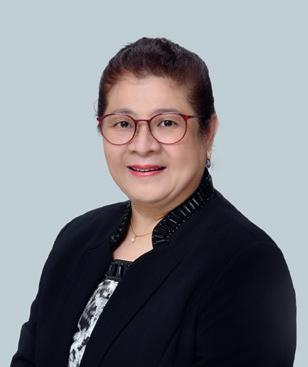

Customer Management
Ferdy Wijsman

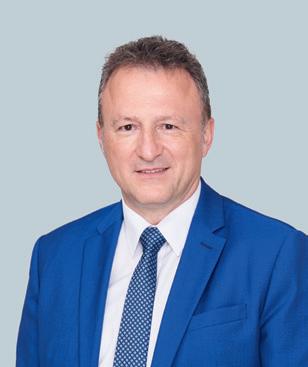
Jane Wong

Management Asia (Singapore,
Laos, Myanmar,
further information, please visit our website: https://www.voestalpine.com/railway-systems/en/ The team of voestalpine Railway Systems Asia is looking forward to work with you on building the future of railways in Asia.
voestalpine Railway Systems Asia
 By Frank Hesse Managing Director, ASEAN
By Frank Hesse Managing Director, ASEAN
With many countries committing to 2050 net-zero carbon emissions targets, industries are investigating how to minimise their carbon dioxide equivalent (CO2-e) emissions to help meet this ambitious goal. Annual global CO2-e emissions continue to rise, and as of 2019, were 36 billion tonnes – up from 22 billion tonnes in 1990 [1]
Conceptual technologies, often either unproven or not fully developed, are sometimes mooted as the answer to reaching a zero-carbon economy. However, while these conceptual technologies are being developed, there are innovative, proven solutions that are available today, tested by innovators and early majority companies, that significantly reduce CO2-e emissions. These solutions incrementally reduce CO2-e emissions, but when adopted pervasively across the market, result in a significant overall reduction.
Rail transport, for both passengers and freight, is already one of the most efficient and least energy-intensive forms of transport available in the market. It provides the same or better levels of service than other transport modes, but with far lower energy use and emissions per Gross Tonne Kilometre (GTK) or passenger kilometre. Rail transports 8% of the world’s passengers and 7% of global freight, yet only generates 2% of total transport energy demand [2]
However, operators can extend the advantages of rail transport by implementing existing technology to further increase efficiencies – thereby reducing costs and becoming even more environmentally friendly, helping meet net-zero global emissions targets.
This article examines how the implementation of more efficient train driving, using Connected Driver Advice Systems (C-DAS) technology, can significantly reduce CO2-e emissions – while at the same time, providing significant fuel and energy use savings.

Rail driving advice systems inform the train driver of the optimal travel speed that enables trains to arrive on time, whilst also using the least amount of energy. Railways around the world are now starting to implement C-DAS, which extends the capability of driving advice systems. C-DAS enables communication with a central control system that monitors train behaviour and revises
train schedules in real-time.
A leading C-DAS solution is Energymiser®, developed by TTG Transportation Technology, which is now part of the Modaxo collection of transport technology companies.
Energymiser® is award-winning C-DAS technology that provides real-time driver advice and performance reports for any kind of train – including diesel, electric, high-speed, freight and heavy haul. It reinforces good driving behaviour and provides drivers with information to make accurate and consistent driving decisions. It does not direct drivers on what to do – it simply provides advice based on track characteristics and the timetable.
Essentially, Energymiser® reduces energy consumption and CO2-e emissions while improving on-time arrivals. It automatically optimises a train journey to minimise the energy required to complete that journey. It prepares journey data, temporary speed restrictions and optional timetables and adapts to actual conditions throughout each unique rail journey. Energymiser® does not save energy by simply slowing trains down; it generates and continuously adjusts an optimal profile throughout a trip. Energymiser® saves energy by using the following four driving modes:
The C-DAS system reinforces good driving behaviour and provides drivers with information to make accurate and consistent driving decisions
• Power – accelerating with full power on steep inclines.
• Hold Speed – holding at speeds less than the speed limit.
• Coast – slowing down for flat routes or steep declines.
• Brake – decelerating for stopping or slowing down a steep decline.
Energymiser® also increases rail capacity utilisation, as well as reducing train and track maintenance costs as it minimises overspeeding and braking. It also integrates with other technology and complements critical safety systems. It can also be interfaced to autonomous train operations.
Energymiser® is proven, Australian-developed technology that has been implemented globally. It has been installed on over 8,000 train and driver applications across 80,000 kilometres of track in ten countries and four continents. It can be retrofitted or integrated for any train type and does not involve extensive configuration or large-scale capital investment.
The technology already delivers sustainability improvements to leading world-class railways, including SNCF in France, KiwiRail in New Zealand, and key operators in the United Kingdom, including Arriva, Abellio and First Group. It is also used or is user ready on trains in Europe, Australia, Africa, and Asia.
Extensive Energymiser® trials and simulation studies have been conducted globally. Results have shown there is a proven ability to make significant fuel use, energy, and CO2-e emissions reductions by simply enabling more efficient train driving.
KiwiRail, New Zealand’s largest rail transport operator, services approximately 4,000 kilometres of track. Since Energymiser® was installed on the freight fleet, it has enabled a 10% reduction in fuel costs. Between 2015 and 2020, KiwiRail saved approximately 17 million litres of diesel, worth tens of millions of dollars. Annual carbon emissions are down 15% from 272,345 CO2-e tonnes in 2015/16, to 230,036 CO2-e tonnes in 2019/20 [3]. KiwiRail has also reduced its annual energy usage by 39 GWh.
SNCF is France’s national state-owned railway and includes the signature high-speed service, the TGV. SNCF uses 9 TWh of electricity in France annually, or 3% of all electricity consumed in France [4]. SNCF installed Energymiser® on all TGV trains to achieve energy consumption savings of up to 10%. Current energy expenditure directly related to TGV trains is around €200 million annually, down from €220 million, from an overall SNCF energy budget of €1.3 billion [5]. When the system is fully rolled out, SNCF expects to save millions off their electricity bill annually, and a significant reduction in CO2-e emissions.
Energymiser® has already achieved 6% to 10+% energy savings for passenger and coal trains in the United Kingdom, where it is the C-DAS market leader on a congested rail network. It has also provided 8.9% energy savings for long and heavy iron ore trains in Africa, and 10+% for freight trains in Australia, the United Kingdom and India [6]. These energy savings translate into similar CO2-e reductions.
For electric trains, the cost of electricity and electricity grid reliability are key issues for rail operators. While they are energyefficient, they still have a significant impact on national electricity supply systems. Electricity costs typically increase during high demand periods, and there are substantial opportunities for railways to increase profitability by reducing their energy use during these times.
Additionally, in many countries, baseload power is normally provided by the cleanest generators, with older and less-efficient generators only used during periods of peak demand. Reducing energy demand in peak times can further reduce emissions as
these least energy-efficient generators are taken offline.
Depending on the type of rail operation, the payback period for an Energymiser® implementation is approximately one to three years, which is a fast return on investment.
Globally, transport accounts for almost 25% of all greenhouse gas emissions. Of this, rail accounts for 3% of transport emissions [7],[8], [9]. Overall, rail accounts for approximately 270 million tonnes CO2-e per year.
If used globally on every single locomotive, assuming a conservative 10% reduction, Energymiser® could reduce rail carbon emissions by over 27 million tonnes of CO2-e per year. This reduction in carbon emissions is equivalent to planting over 450 million trees, that sequester carbon for 10 years or taking 5.8 million cars off the road [10]
These calculations demonstrate that energy use efficiency measures, such as Energymiser®, can significantly decrease the carbon footprint of rail transport, without requiring large scale capital investment.
Historically, some barriers can delay new technology like Energymiser® from being widely adopted – such as government regulations and requirements, electricity market conditions and reluctance to adopt new technology in a complex operating environment. Today, driver assist technology is expected as part of new operations and is usually specified as a key tender requirement.
In New Zealand, KiwiRail has shown that these organisational and cultural barriers can be overcome by bringing all parties to the table to discuss the long-term economic and environmental benefits. In 2013, KiwiRail conducted a three-month trial on a freight line in the North Island and after the promised fuel reduction target of 10% was demonstrated, the decision was made to implement Energymiser® across the entire fleet [11]
KiwiRail enlisted senior train drivers to champion the system, which is now installed in all of KiwiRail’s 180 locomotives. Over 350 train drivers have successfully received training on how to use the product. There is even scope to include C-DAS in training and simulation programs for train drivers, so they are familiar with the system before operating locomotives in the real world.
When considering how to practically reduce CO2-e emissions, there are tools and solutions already available that can make a tangible impact right now.
These proven examples, like Energymiser®, show major environmental benefits can be achieved, with the added advantage of cost savings and service improvements. Energymiser® can enable efficiencies that help rail operators reduce fuel or electricity use (usually a rail operator’s largest expense), reduce CO2-e emissions and improve on-time performance simultaneously.
This all supports the notion that rail, already the most efficient form of transport, can become even more sustainable – making rail transport a more attractive and affordable investment.
For more information contact info@trapezegroup.com.au References
For more information on the references indicated in the text, please send an email with “Trapeze references” in the subject line to info@tdhrail.com
There is a saying among locals that if you can drive in Penang, you can drive anywhere in the world.
This remark is often used to indirectly make fun of Penang drivers and their driving habits, but the driving conditions in the state have indeed put driving skills and motorists’ patience to the test in recent years, mainly during morning and evening rush hours and holiday seasons.
Over the last decade, driving in Penang, the second smallest state in Malaysia with a land area of 1,048 sq km, has become increasingly challenging due to worsening traffic. The state has more registered vehicles than residents and vehicles from out-ofstate enter Penang daily for work, business and pleasure.
According to the Transport Ministry of Malaysia, Penang had 2.77 million registered vehicles in 2020, up from 2.74 million in 2019. This positioned Penang as the fourth state with the most registered vehicles in the country after Kuala Lumpur, Johor, and Selangor, despite having a population of just 1.7 million.
In June this year, Penang police also reported that traffic volume on the Penang Bridge and Sultan Abdul Halim Mu’adzam Bridge increased by 15.9% from 2.8 million in May 2019, before the Covid-19 pandemic, to 3.1 million vehicles in May 2022.
The high traffic volume in Penang, mainly on the island, reflects Penang’s strength as one of Malaysia’s leading states in manufacturing and services, especially in the electrical and electronic (E&E) and tourism sectors.
In order to address Penang’s worsening traffic woes and to boost and maintain the state’s productivity as a manufacturing powerhouse, the state government therefore introduced the ambitious multimodal Penang Transport Master Plan (PTMP) in 2015. A priority component in the plan is the Bayan Lepas Light Rail Transit (BLLRT).
As Penang Island’s first modern-day rail line, the proposed BL LRT will span 26.8km, linking George Town and the upcoming Penang South Islands (PSI) development off the island’s southern coast. The alignment and its 23 stations will be strategically located to cover major must-go areas and landmarks such as the state government’s administrative offices in KOMTAR, Universiti Sains Malaysia (USM), the SPICE Arena, the Bayan Lepas Free Industrial Zone (FIZ), the Penang International Airport and PSI.
It is estimated that a trip from KOMTAR to the airport in Bayan Lepas will take 37 minutes, and the LRT service will be at a frequency of four minutes.

To avoid disrupting traffic on existing roads, the entire BLLRT alignment and its stations will be elevated.
The LRT service will also be complimented and supported by a feeder service that operates within a 3km radius from every LRT station, addressing the first- and last-mile problem.
To date, the BL LRT component has received partial approval for its Phase One alignment from KOMTAR to Bayan Lepas. Full approval from the Malaysian Transport Ministry is pending the approval of its Environmental Impact Assessment (EIA) Report for Phase Two, involving the LRT depot, which will be built on the proposed PSI development.

The introduction of the BL LRT has marked a shift in the mindset for many Penangites. In the past, many preferred using their own vehicles to get around rather than using public transport such as buses or taxis. Some considered the public transport service
to be inconvenient, slow, and unpredictable. But times have changed. When the BLLRT proposal was presented to the people in a three-month mandatory public inspection in 2019, the LRT received a high approval rate of 97.7%.
Even though the implementation of the LRT has seen delays due to unforeseen circumstances including the Covid-19 pandemic in 2020 and 2021, the people’s support for the BLLRT has not waned.
The state government has been organising weekend PTMP roadshows since May this year to raise the people’s awareness of efforts and strategies to alleviate Penang’s traffic congestion problem, including building new roads and introducing the LRT line.
People attending the roadshows are most interested in the BL LRT. Most questions about the PTMP are about the LRT, namely when the construction will begin, when the service will start operation and when the service can be extended to other parts of Penang, such as mainland Penang.

The state government also received a similar positive response for the BL LRT, which generated a lot of interest from rail industry players and other participants at the Rail Solutions Asia 2022 exhibition in Kuala Lumpur in June.
Penangites and visitors to Penang are now more knowledgeable and have a higher awareness of the importance of using public transportation for their daily commute to work and for leisure. Most have used urban rail network services in Kuala Lumpur and other major cities around the world and appreciate the convenience and economy of using public rail transportation.

its pre-qualification stage to shortlist qualified and experienced companies to participate in the bidding process.
The pre-qualification exercise is to identify and pre-qualify suitable works package contractors to participate in the RFP process, where the companies will submit proposals on engineering, procurement, construction, testing and commissioning of the LRT’s viaducts, stations, depot, system, and other associated works, as well as the funding, operation and maintenance of the LRT system.
For the pre-qualification stage, interested companies are to submit their company profile, details on their key personnel, past and current projects, the contractual relationship of members in their respective consortiums or joint ventures, financial information, funding model, proposed implementation plan and other supporting documents.
Many are now saying that other major Malaysian cities, apart from the Klang Valley, also need to have their own LRT or mass rapid transit system to provide more efficient public transport services to reduce dependency on private vehicles.
Many Malaysians today also see the rationale in reducing their reliance on private vehicles for the good of the environment. Using public transportation like the LRT, which runs on electricity, will help national and international efforts to reduce carbon emissions to face climate change. These are all positive indications that people are ready to shift to using public transportation and leave their cars at home in the future.
To implement the LRT project, the Penang government has announced a Request for Proposal (RFP), which is currently at
Since the pre-qualification stage started on July 21, the Penang Infrastructure Corporation (PIC) has received encouraging responses from more than 40 companies from Malaysia and abroad. The response was so good that more than 10 international companies, including rolling stock makers, requested more time to submit the necessary documents and to form joint ventures with local partners to increase their chances of winning the bid to build the LRT.
Instead of ending the pre-qualification stage as initially planned on August 24, the Penang government considered the international companies’ request and extended the registration deadline from August 8 to August 19 and the document submission deadline to October 7 to allow more interested companies to submit their documents.
If all goes well, the RFP process will be announced by the end of 2022 and construction can begin next year, subject to the federal authorities’ approval.
Details on the BL LRT and the PTMP are available on penanginfra.com.
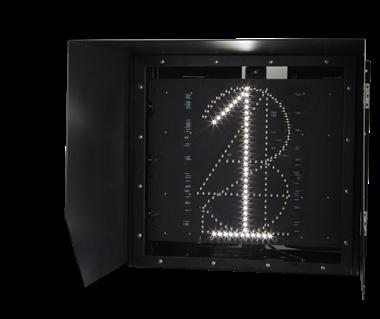
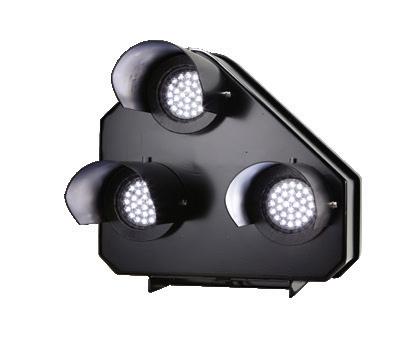
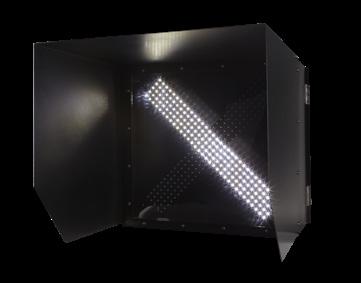
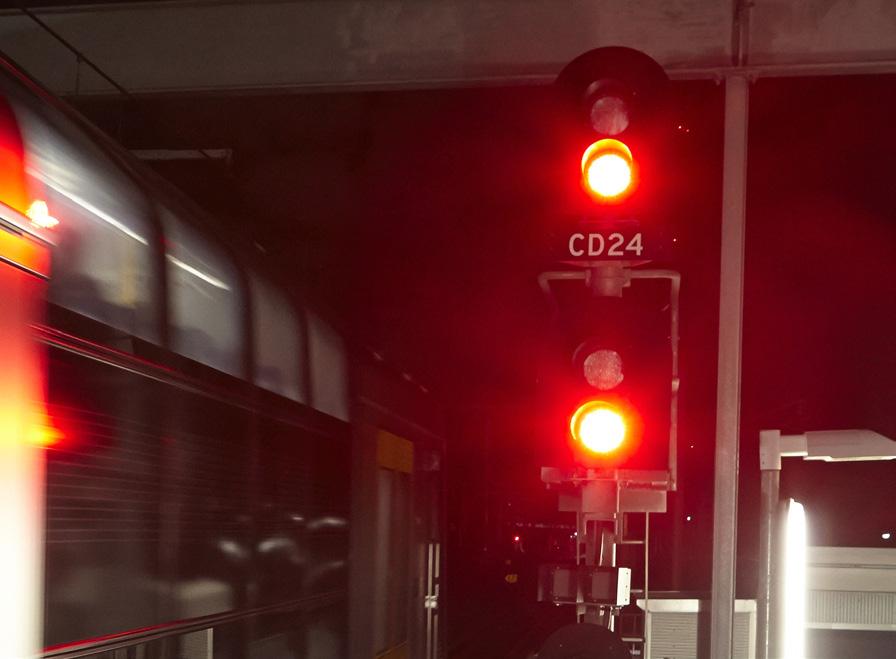
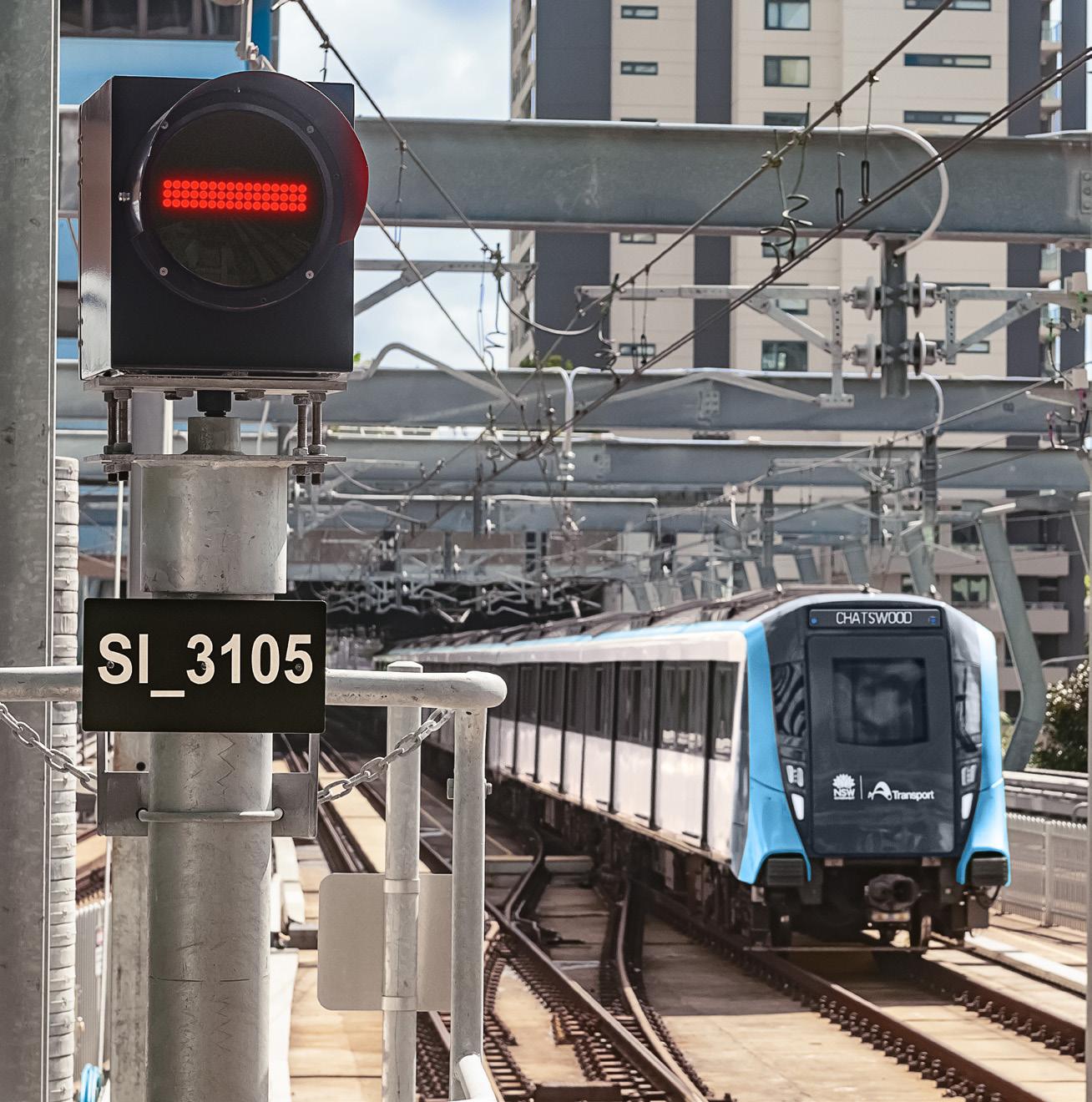
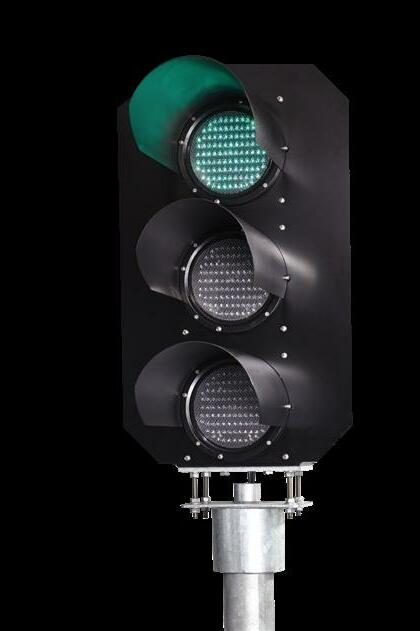
Aldridge is the one stop name to go to for all railway signals. From world-class tried and true signal systems to route programmable intelligent signals to wireless level crossings, talk to Aldridge.
